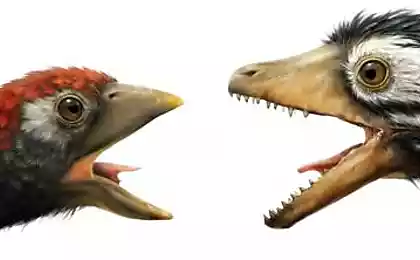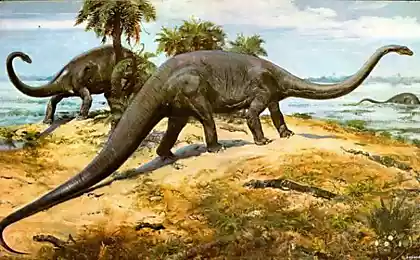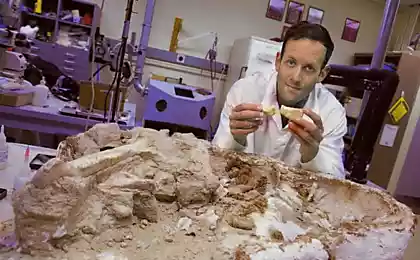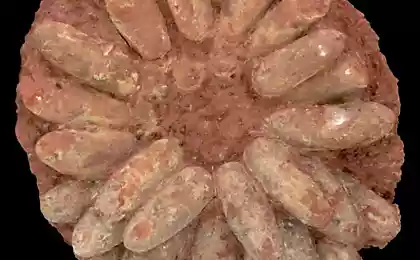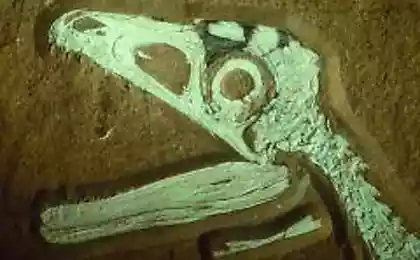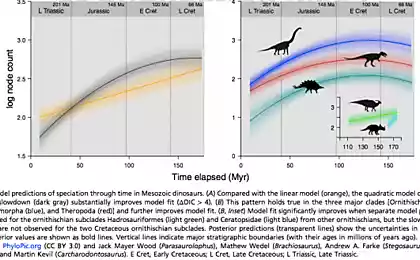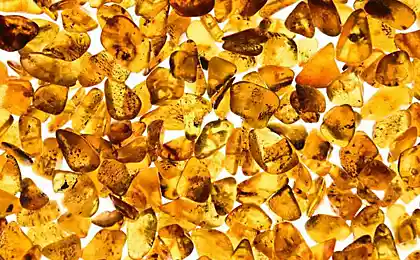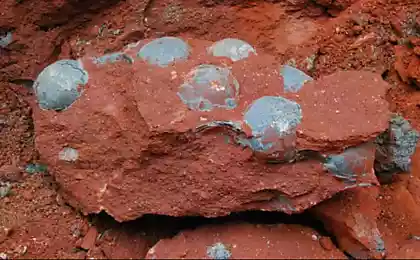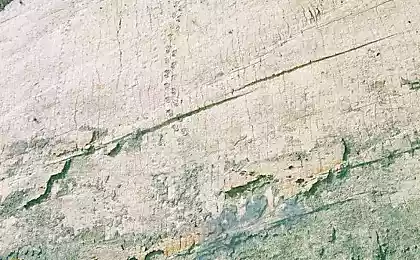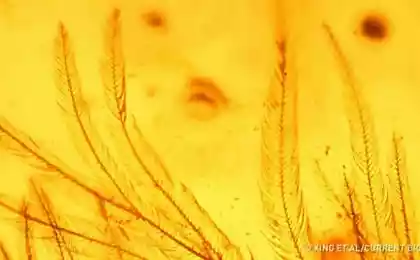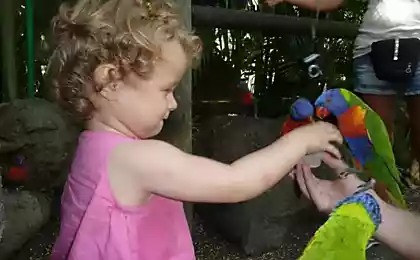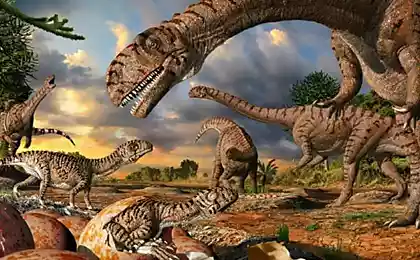594
The amber found perfectly preserved feathers birdlike dinosaurs
These animals were externally identical to modern birds, with the exception of the teeth, of a different principle of flight and clawed fingers on the wings
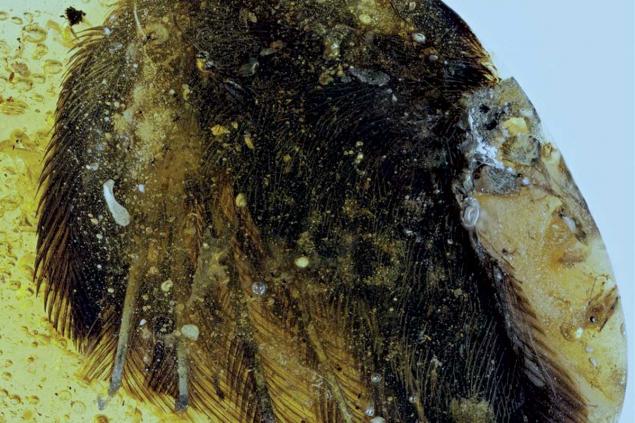
About 99 million years ago, a small bird-like dinosaur baby (one might say, chick) shocked - his feathers stuck to the high tree resin, and escape from sticky traps did not succeed. To free oneself was only after many attempts, leaving the resin part of yourself - your feathers. dinosaur himself was still young - probably no more than the length of the animal 3, 5 centimeters. After some time, the resin fossilized, turning into amber, which was found by people. Feathers in amber preserved perfectly.
A piece of amber with feathers was transferred to the Chinese University of Geological Sciences in Beijing. To study finds launched Lida Xing, has long been working with amber and other fossils, which are the remains of ancient animals.
Already I managed to find out that these well-preserved feathers belong to the family "Enantsiornisovye bird" (lat. Enantiornithes). It was not modern birds and their ancestors. Albeit with differences, but these animals were like them. Unlike modern birds are quite large - here and skeletal structure, and the presence of teeth, plus the presence of the wings rudimentary fingers with claws at the end of the last phalanx.
The most notable feature is the belt structure of the front limbs and the bones of the wings, which indicate that the device for movement in the air these birds operated otherwise than in veerohvostyh birds. Until now, there is no model that would explain the operation of the aircraft enantsiornisovyh birds. No functional explanation of most structural features and details of their wing bones and shoulder girdle.
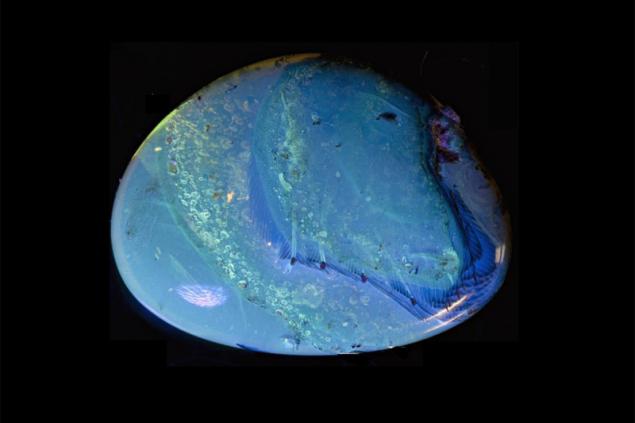
Bird? No, the dinosaur (The Chinese University of Geological Sciences in Beijing)
Findings such as these make it possible to clarify the evolution of flight skills, to trace the evolution from dinosaurs to birds. Feathers in amber clarify when the animals have learned to fly, and fly well, and not just a plan. Despite the fact that the feathers found in amber, belong to the grown chicks, they are very well developed. Duvet cover, characteristic of the modern chicks of birds here. This is another difference between the ancestors and relatives of birds from our modern birds.
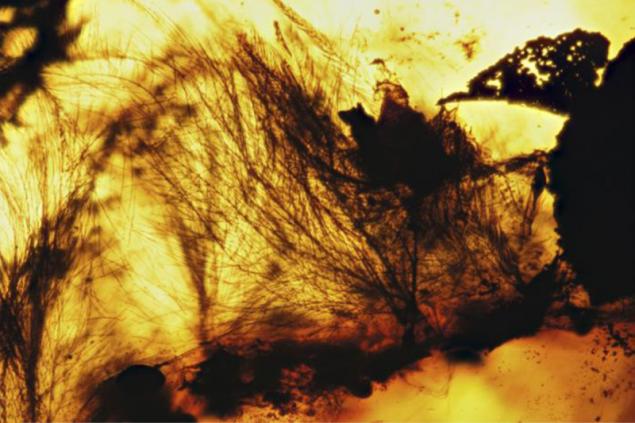
With regard to other dinosaurs, it is now proven that many types of them were covered with feathers, although no wings had. Some dinosaurs were covered with feathers throughout their lives, others can grow into them in certain periods. One proof of this are the remains of ancient animals that have been found in south-east Siberia, a few years ago. In the valley Kulinda prints bones were found in the Trans-Baikal Territory, the skin and the structures of the form pereobraznyh Kulindadromeus zabaikalicus dinosaurs. The size of the animal has reached half a meter, it fed the plants.
Scientists believe that the feathers have been distributed among a number of groups of dinosaurs. Initially, the assumptions were based on indirect evidence of a tail, but in the mid-90s and have found direct evidence. Then the remains of small carnivorous dinosaurs, with footprints were found pen cover. At the moment, the presence of feathers has established the representatives of 8 families of carnivorous dinosaurs that belong to the suborder theropod. Perhaps plumage originally served as insulation, and has later helped plan some wood species.
The most plumage had developed some kind of family dromaeosaurus that were arboreal lifestyle and used the long contour feathers for planning from tree to tree. In these kinds of feather was almost modern cover with fluff, cover and contour feathers.
Source: geektimes.ru/post/277894/

About 99 million years ago, a small bird-like dinosaur baby (one might say, chick) shocked - his feathers stuck to the high tree resin, and escape from sticky traps did not succeed. To free oneself was only after many attempts, leaving the resin part of yourself - your feathers. dinosaur himself was still young - probably no more than the length of the animal 3, 5 centimeters. After some time, the resin fossilized, turning into amber, which was found by people. Feathers in amber preserved perfectly.
A piece of amber with feathers was transferred to the Chinese University of Geological Sciences in Beijing. To study finds launched Lida Xing, has long been working with amber and other fossils, which are the remains of ancient animals.
Already I managed to find out that these well-preserved feathers belong to the family "Enantsiornisovye bird" (lat. Enantiornithes). It was not modern birds and their ancestors. Albeit with differences, but these animals were like them. Unlike modern birds are quite large - here and skeletal structure, and the presence of teeth, plus the presence of the wings rudimentary fingers with claws at the end of the last phalanx.
The most notable feature is the belt structure of the front limbs and the bones of the wings, which indicate that the device for movement in the air these birds operated otherwise than in veerohvostyh birds. Until now, there is no model that would explain the operation of the aircraft enantsiornisovyh birds. No functional explanation of most structural features and details of their wing bones and shoulder girdle.

Bird? No, the dinosaur (The Chinese University of Geological Sciences in Beijing)
Findings such as these make it possible to clarify the evolution of flight skills, to trace the evolution from dinosaurs to birds. Feathers in amber clarify when the animals have learned to fly, and fly well, and not just a plan. Despite the fact that the feathers found in amber, belong to the grown chicks, they are very well developed. Duvet cover, characteristic of the modern chicks of birds here. This is another difference between the ancestors and relatives of birds from our modern birds.

With regard to other dinosaurs, it is now proven that many types of them were covered with feathers, although no wings had. Some dinosaurs were covered with feathers throughout their lives, others can grow into them in certain periods. One proof of this are the remains of ancient animals that have been found in south-east Siberia, a few years ago. In the valley Kulinda prints bones were found in the Trans-Baikal Territory, the skin and the structures of the form pereobraznyh Kulindadromeus zabaikalicus dinosaurs. The size of the animal has reached half a meter, it fed the plants.
Scientists believe that the feathers have been distributed among a number of groups of dinosaurs. Initially, the assumptions were based on indirect evidence of a tail, but in the mid-90s and have found direct evidence. Then the remains of small carnivorous dinosaurs, with footprints were found pen cover. At the moment, the presence of feathers has established the representatives of 8 families of carnivorous dinosaurs that belong to the suborder theropod. Perhaps plumage originally served as insulation, and has later helped plan some wood species.
The most plumage had developed some kind of family dromaeosaurus that were arboreal lifestyle and used the long contour feathers for planning from tree to tree. In these kinds of feather was almost modern cover with fluff, cover and contour feathers.
Source: geektimes.ru/post/277894/
